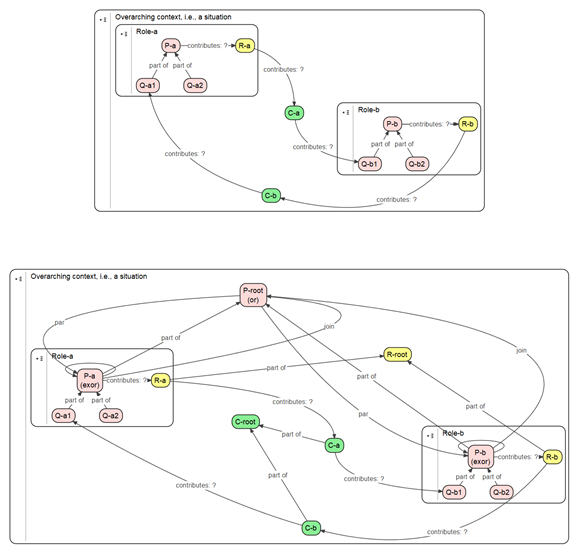EMont Interpretation – An Executable Model
EMont is a versatile model for capturing complex situations with multiple worldviews. Semantic web rules have been given to define the allowed relations between EMont elements. Although these rules suggest that EMont models have a precise meaning, there is still plenty of room for interpretation. We will give a particular interpretation here in the form of an executable model that can be simulated on computer. But keep in mind, this is just one way of interpreting an EMont model. In fact, many choices have been made in the executable model itself, with justifiable reasons that will be discussed, but different premises and objectives may yield slightly different interpretations.
The precise meaning of an interpretation, i.e., the semantics, is typically given by showing how the modeling elements are translated to a formalism that is well understood. The Basic Concurrent Object-Oriented Programming Language (BCOOPL) serves this purpose for two reasons. First, the concurrent object model of BCOOPL is akin to the EMont concept of PQRs in context (objects) that run concurrently. Therefore, the transformation to BCOOPL is relatively straightforward. Second, by devising a program translator that translates an EMont model to a BCOOPL program, the EMont model can be simulated directly on a computer.
The ability to simulate an EMont model is not the only reason for presenting the executable model. It also helps to get a better understanding of the ideas conveyed in an EMont model. For instance, have a look at the EMont model shown below. It looks quite simple and obvious, but a lot of relations between elements are left implicit. In the diagram below, those relations have been made explicit. (But they do clutter a diagram a lot, which is the reason to keep these relations implicit.) As can be distilled from the diagram, nested goals and conditions are part of a corresponding root element, and PQRs are part of one compound activity, and the PQRs run concurrently and they repeat themselves. Note that the explicit version of this EMont model is already an interpretation, and for that reason, open for discussion.
<accesscontrol>Access:We got to move</accesscontrol>

